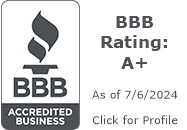The closing process is the final step in your homebuying journey, where ownership of the property is officially transferred to you. For first-time homebuyers, the closing can be both exciting and nerve-wracking. Here’s what you need to know to prepare for your first closing.
Understanding the Closing Process
Closing involves signing the necessary documents to finalize the mortgage and transfer ownership. It typically takes place at a title company, attorney’s office, or escrow office. This is the day when all the financial and legal details come together, and you officially become the owner of your new home.
Reviewing the Closing Disclosure
A few days before closing, you’ll receive the Closing Disclosure, which details the loan terms, monthly payments, fees, and closing costs. It’s crucial to review this document carefully and compare it to the Loan Estimate you received earlier in the process. Ensure that all the details match and that there are no unexpected changes or errors. If you notice any discrepancies, contact your lender immediately for clarification.
What to Bring to Closing
On the day of closing, you’ll need to bring several important items:
- Valid Photo ID: A driver’s license or passport is typically required to verify your identity.
- Proof of Homeowners Insurance: Your lender will need to see proof that the property is insured.
- Cashier’s Check or Proof of Wire Transfer: You’ll need to provide funds for your down payment and closing costs. Your lender will provide you with the exact amount required.
Make sure all your documents are organized and easily accessible to ensure a smooth closing process.
Signing the Documents
Be prepared to sign multiple documents during the closing process. These may include:
- Promissory Note: This document outlines your promise to repay the mortgage loan.
- Deed of Trust: This secures the loan by placing a lien on the property.
- Affidavits and Disclosures: These may include documents related to property taxes, flood insurance, and other important details.
Take your time to read each document carefully. If you’re unsure about anything, don’t hesitate to ask questions. It’s important to fully understand what you’re signing.
Paying Closing Costs
Closing costs typically range from 2-5% of the home’s purchase price and include fees for the loan application, appraisal, title insurance, and more. Ensure you have the necessary funds available to cover these costs. Your lender will have provided you with an estimate of these costs earlier in the process, so there should be no surprises on closing day.
Conducting the Final Walkthrough
Before closing, you should conduct a final walkthrough of the property. This is your last chance to ensure that the property is in the agreed-upon condition and that any repairs requested during the inspection have been completed. If you notice any issues, address them with the seller or your real estate agent immediately to avoid delays in the closing process.
Funding the Loan
Once you’ve signed all the necessary documents, the lender will disburse the loan funds to the seller. This process is known as funding the loan and represents the final step before ownership is officially transferred to you. It’s important to ensure that all financial aspects are in order to avoid any last-minute hiccups.
Recording the Deed
The deed, which legally transfers ownership from the seller to you, will be recorded with the local government. This process may take a few days, but you’ll receive a copy of the recorded deed once it’s complete. This document is crucial as it serves as official proof of your ownership.
Receiving the Keys
After all the documents are signed and the funds are disbursed, you’ll finally receive the keys to your new home. Congratulations, you’re now a homeowner! This moment marks the culmination of all your hard work and planning, and it’s time to start the next chapter of your life in your new home.
Post-Closing Responsibilities
Even after the closing is complete, there are still a few responsibilities to take care of:
- Keep All Closing Documents: Store these in a safe place for future reference.
- Set Up Mortgage Payments: Ensure that you understand the payment schedule and set up your first mortgage payment.
- Update Your Address: Notify relevant parties, such as the post office, utilities, and your employer, of your new address.
- Start Planning Your Move: Now that you have the keys, it’s time to organize your move and start settling into your new home.
Conclusion
The closing process can be complex, but with the right preparation and understanding, you can navigate it smoothly. By knowing what to expect and being well-prepared, you can ensure a successful first closing and start your journey as a homeowner on the right foot.






